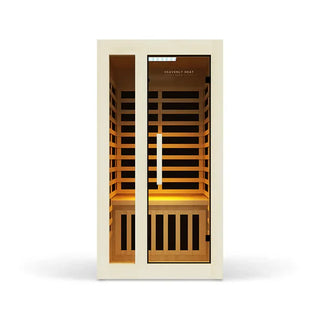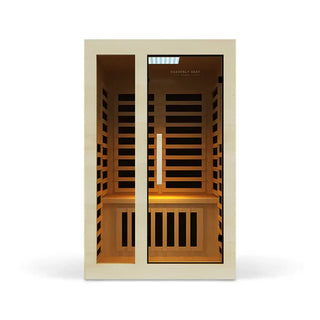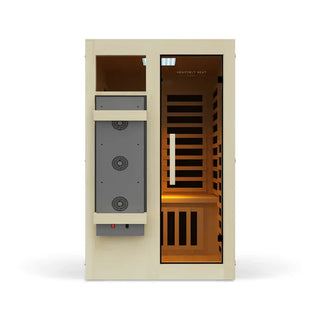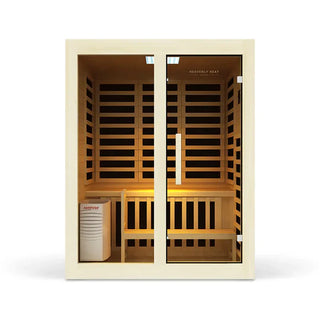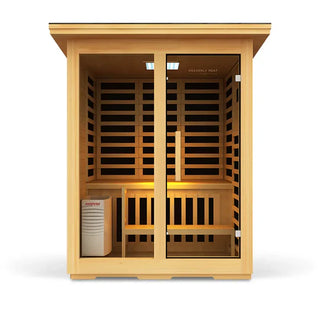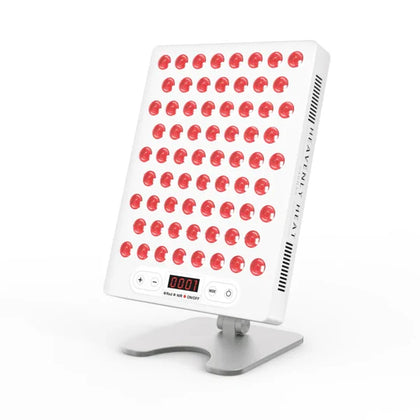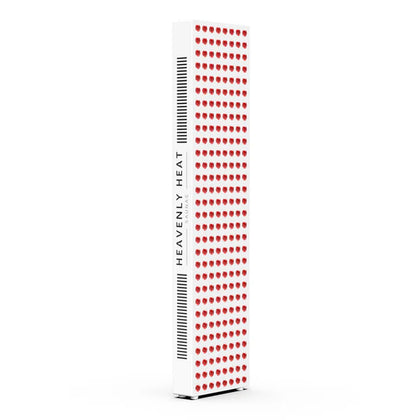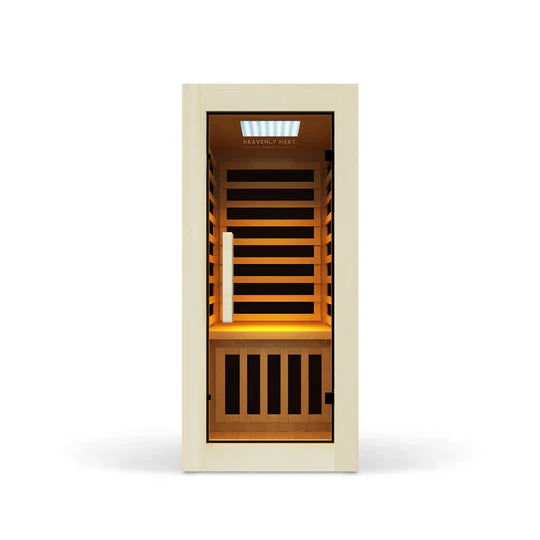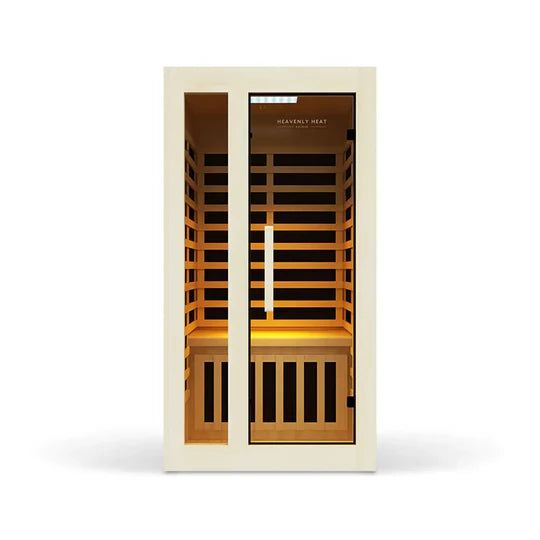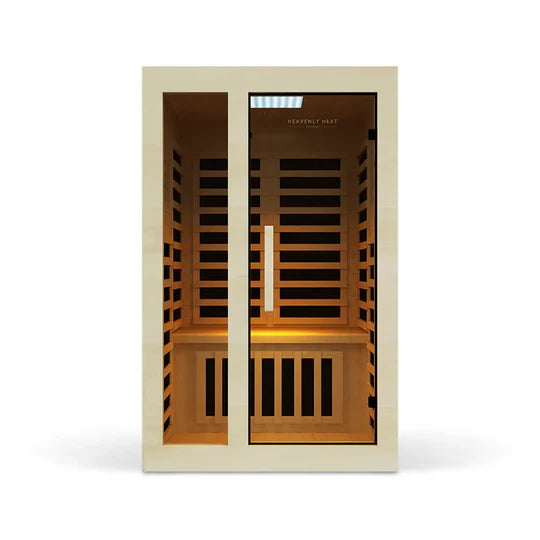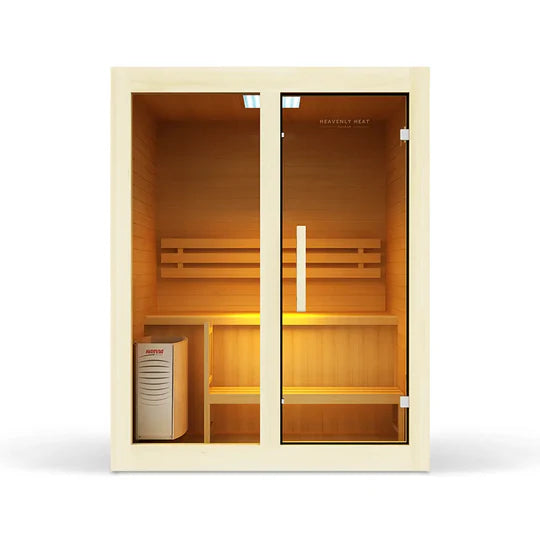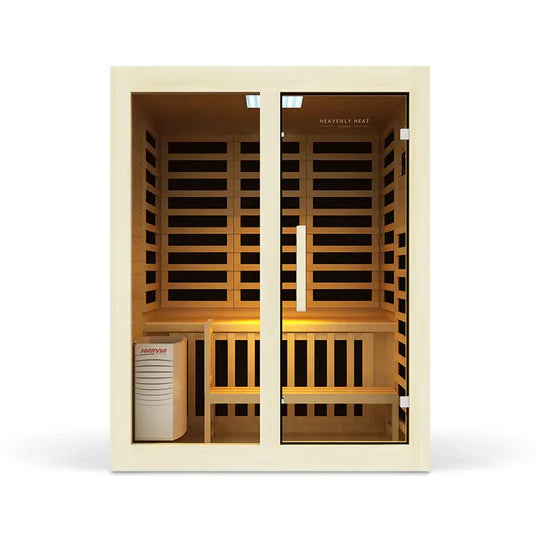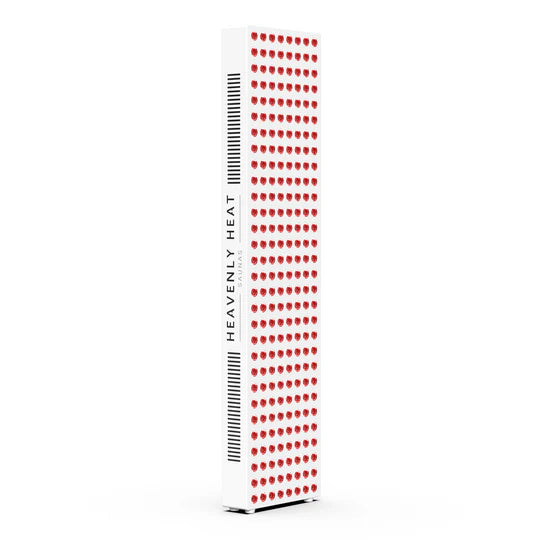Does Sauna Increase Testosterone?

Wondering if saunas can boost testosterone levels? You’re not alone. Many men, especially those over 30, experience decreased energy, lower libido, and weight gain, which could be signs of low testosterone. In fact, 1 in 4 men in the U.S. face this issue.
But could the sauna help? Studies suggest it might. Let’s dive into the science behind saunas and testosterone to see if this natural therapy can make a difference.
Key Takeaways
- Testosterone is essential for men’s physical traits and overall health, but levels can decline with age and stress.
- Saunas may not directly boost testosterone in the short term but can enhance overall hormone balance by increasing hormones like growth hormone.
- Regular sauna use might lead to a slight increase in testosterone levels, as shown in a study with active young men.
- Spending time in a sauna can lower cortisol levels, potentially reducing stress and promoting better hormonal health.
- The relationship between sauna use and testosterone levels is complex and still being researched, with minimal direct effects observed.
What are Testosterones?
What is Testosterone?: Testosterone is a hormone mostly found in men, but women make it too, just in smaller amounts.
Role of Testosterone in Men: It’s what gives men their typical traits, like more muscle, body hair, and a deeper voice.
Health Benefits of Testosterone: Testosterone also helps keep important things in check, like sex drive, bone strength, and the production of red blood cells.
Where is Testosterone Made?: Testosterone is a hormone made mostly in a man’s testicles.
Testosterone Production and Sources: It comes from cholesterol,
Normal Testosterone Levels: a normal range for testosterone is between 300 and 1,000 nanograms per deciliter (ng/dL).
Effects of High Testosterone: If your testosterone is too high, it can cause mood swings or acne.
Effects of Low Testosterone: If it’s too low, you might feel tired, have a lower sex drive, or even feel depressed.
Testosterone Levels and Age: Testosterone levels usually decrease as men get older, with a drop of 0.4–2% each year after age 30.
Testosterone Decline in Older Age: by the time you’re in your 40s or 50s, your testosterone could be much lower than it was in your 20s.

Impact of Stress and Health on Testosterone: Stress and health issues can also contribute to lower levels, making it important to pay attention to your overall health.
Studies that cover the effects of sauna on testosterone
Introduction: Sauna and Testosterone
- To understand the link between sauna use and testosterone levels, we can look at clinical studies and research findings.
No Direct Testosterone Boost
- Studies show that saunas don’t directly boost testosterone in the short term, but they do increase other hormones like growth hormone and prolactin.
Growth Hormone and Prolactin: Indirect Effects
- Prolactin is a hormone involved in lactation and body balance, similar to growth hormone. Growth hormone, which is made in the brain, helps regulate muscle, bone, and fat metabolism
- Growth hormone, in particular, can indirectly help boost testosterone. So, while saunas may not give an immediate testosterone boost, they can still support your overall hormone balance.

Study on Sauna and Testosterone (Young Men)
A study on 30 active young men found that after four 12-minute sauna sessions, testosterone levels slightly increased (from 4.04 to 4.24 ng/ml), but the change was minimal.
Cortisol (a stress hormone) dropped significantly, suggesting that saunas help reduce stress hormone levels.
Hormonal Surge in Sauna: Norepinephrine and Growth Hormone
- A study published in the Current Opinion in Endocrine and Metabolic Research explored how sauna bathing affects our hormones.
Researchers observed a surge in norepinephrine (increases alertness and supports the stress response) and growth hormone, but testosterone levels didn’t show significant changes.
Regular sauna use results in less fluctuation in hormone levels over time.
Conflicting Results: Sauna and Testosterone
Studies show a wide range of conflicting results regarding saunas and their impact on testosterone levels.
While some individuals may experience slight increases in testosterone, the overall effect seems to be minimal.

Natural ways to increase testosterone levels
Exercise to Boost Testosterone
Exercise is Proven to Increase Testosterone: Exercise is one of the best natural ways to boost testosterone, and research backs this up. Let’s take a quick look at what the studies say about how exercise affects testosterone levels.
Aerobic Exercise Helps Lower Body Fat and Boost Testosterone: A study published in the World Journal of Men’s Health in 2018 looked at 87 men with erectile dysfunction to see how body fat and exercise affected their testosterone levels. The researchers found that having less body fat and doing aerobic exercise, like cycling, helped boost testosterone levels.
HIIT Can Give a Quick Testosterone Spike: According to another study, testosterone levels significantly increase immediately after a single HIIT (High-Intensity Interval Training) session. This shows how certain types of exercise, like HIIT, can give an immediate, albeit temporary, boost to testosterone.
Cardio and Fat Loss as Long-Term Strategies: In short, reducing fat and staying active with cardio exercises are natural ways to increase testosterone.
Exercise Intensity Matters: A study published in the Journal of Endocrinological Investigation looked at how exercise affects testosterone levels in men. The researchers analyzed 48 studies involving 569 men to see if physical activity increased testosterone. They found that moderate-to-high-intensity exercises led to a noticeable boost in testosterone levels right after exercise, but this effect faded after 30 minutes. Importantly, lower-intensity workouts didn’t have the same impact. This shows that exercise intensity plays a key role in increasing testosterone, even if temporarily.
Follow a healthy diet
Nutrition Also Plays a Vital Role: A healthy diet can play a key role in naturally boosting testosterone levels. Foods rich in zinc, such as oysters and nuts, and those high in magnesium, like leafy greens, can support hormone production. Including fatty fish and extra-virgin olive oil also helps, while avoiding processed foods and excess alcohol is essential for maintaining healthy testosterone levels.
Increase vitamin D intake
Increasing your vitamin D intake can be a natural way to boost testosterone levels.
A study found that overweight men who took vitamin D supplements saw significant increases in their testosterone levels after a year.
Those who didn’t take the supplements showed no change. This suggests that ensuring you have enough vitamin D could help maintain healthy testosterone levels and overall well-being.
Quality Sleep
Study Overview: According to a 2005 study, researchers looked into whether testosterone levels are more affected by sleep or the body’s internal clock.
Different Sleep Scenarios Tested: They had seven healthy young men sleep in three different ways: at night, during the day, and with a normal sleep pattern for comparison.
Testosterone Increased During Sleep: The results showed that testosterone levels went up during both night and day sleep, highlighting how important good sleep is for keeping testosterone levels healthy.
Levels Drop When Awake: The study also found that testosterone dropped when the men were awake, suggesting that getting enough quality sleep can help naturally increase testosterone levels.
Reduce sugar intake
Study Background & Objective: A study by Chen et al. (2018) explored how sugar-sweetened beverages (SSBs) affect testosterone levels in men aged 20 to 39.
Key Findings on Sugar Consumption: discovered that men who drank more than 442 calories from sugary drinks each day were 2.29 times more likely to have low testosterone compared to those who consumed less than 137 calories.
Implication for Testosterone Health: Highlights that reducing the intake of sugary drinks can be an effective, natural way to support healthier testosterone levels.
Perform yoga
Who Took Part in the Study: The research involved 10 adult men who participated in yoga sessions while their salivary testosterone and cortisol levels were measured at different time points.
Hormonal Response After Yoga: Salivary testosterone, which is linked to stress and personality traits like extroversion, tended to increase after yoga stretching.
More importantly, the testosterone-to-cImproved Testosterone-to-Cortisol Ratio: ortisol ratio—a key indicator of athletic recovery—improved significantly, pointing to hormonal balance Benefits from yoga.
Why Yoga Might Help Boost Testosterone: Thus, incorporating yoga into your routine may naturally boost testosterone by enhancing hormonal balance and reducing stress.
Managing Body weight
Managing body weight helps boost testosterone by reducing fat and improving muscle mass.
Regular exercise and a balanced diet are key to maintaining weight. This approach supports hormone production and overall health, making it easier to maintain higher testosterone levels naturally.
Summary
To naturally boost your testosterone levels, focus on regular exercise, a healthy diet, quality sleep, and stress management. Include zinc, magnesium, and vitamin D in your meals, avoid excess sugar, and maintain a healthy weight. These simple steps can enhance your hormone levels effectively.
Method |
Type |
Key Benefit |
HIIT & Cardio |
Exercise |
Immediate but temporary testosterone boost |
Healthy Diet |
Nutrition |
Supports hormone production (zinc, magnesium, fats) |
Vitamin D |
Supplement |
Linked to increased testosterone in vitamin D-deficient men |
Sleep |
Lifestyle |
Boosts and maintains healthy testosterone levels |
Less Sugar |
Nutrition |
Prevents testosterone suppression linked to high sugar |
Yoga |
Stress Reduction |
Improves hormone balance and recovery (T/C ratio) |
Weight Management |
Lifestyle |
Lowers body fat → supports healthy testosterone production |

FAQs
Can regular sauna use lead to long-term improvements in testosterone levels?
Regular sauna use can raise testosterone levels over time with consistent sessions. Using a sauna three to four times a week supports hormone health by activating the hypothalamic-pituitary-gonadal (HPG) axis, which controls testosterone production. It may also reduce cortisol, a stress hormone that suppresses testosterone.
Can regular sauna use lead to long-term improvements in testosterone levels?
Regular sauna use can positively impact testosterone by improving blood flow and triggering hormonal responses. Over time, consistent use may lead to long-term improvements. Sauna sessions can also reduce cortisol, supporting healthy testosterone levels, and may help slow the natural decline in testosterone in aging men, promoting better hormone balance.
Could sauna use have negative effects on testosterone in certain conditions, such as overuse or heat intolerance?
Excessive sauna use can lower testosterone levels, especially with prolonged heat exposure. Heat intolerance can strain the body's temperature regulation, leading to hormonal imbalances. Extended sauna sessions may disrupt testosterone production. Individuals with cardiovascular issues or heat intolerance may face higher risks. Use saunas responsibly to maintain balanced testosterone levels.
Does sauna use have different effects on testosterone levels in men of varying age groups or fitness levels?
Sauna use boosts testosterone levels more in younger men, as testosterone naturally declines with age. Active men experience a stronger response than sedentary ones, with highly trained athletes seeing even greater effects. Frequent sauna use provides consistent benefits, especially for fitter individuals. Generally, younger men see more significant boosts than older men, even with similar fitness levels.

